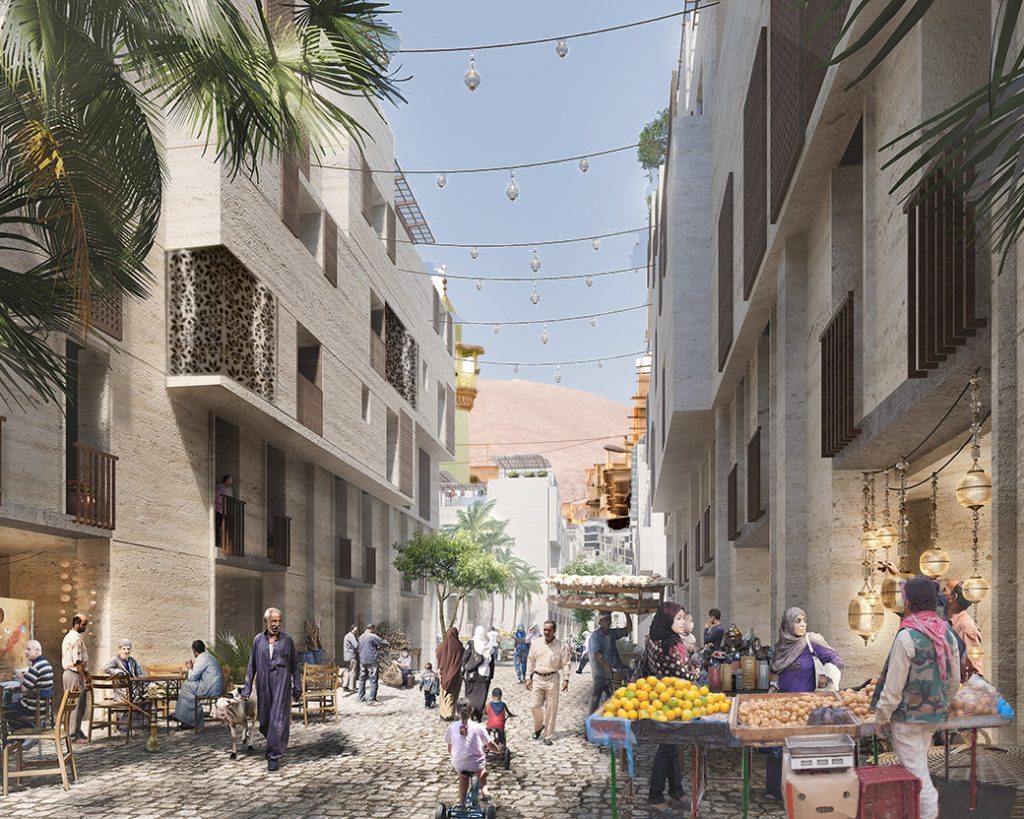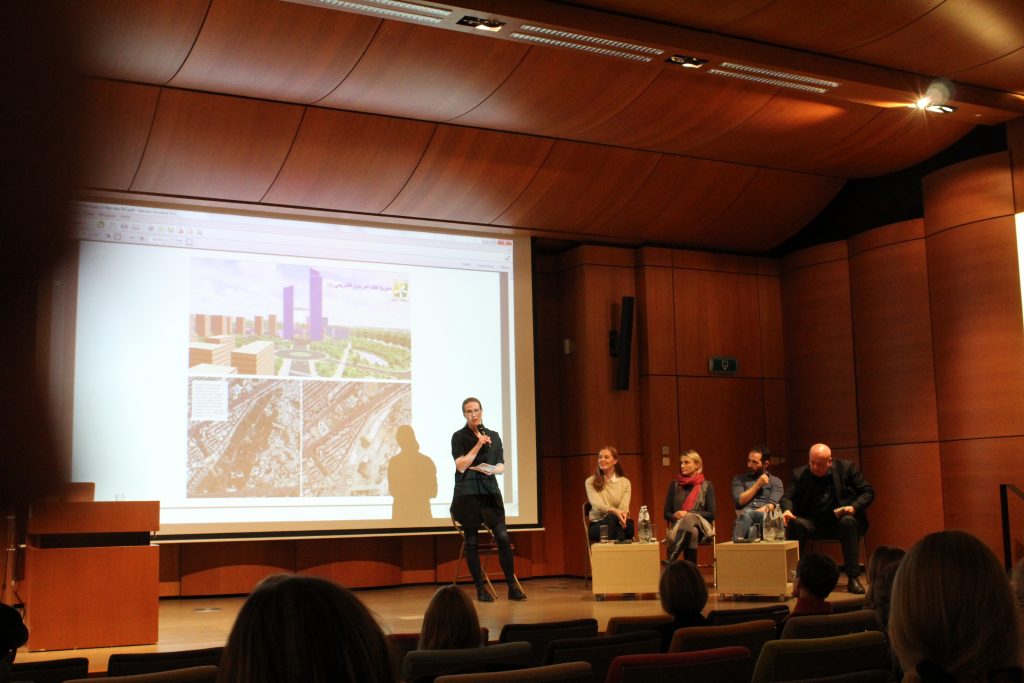Finland could be a forerunner in architecture for peace

’Spaces of Peace’ conference in Brussels in the end of 2019 approached architecture from the perspective of peace-building. The conference, organised by spatial designer Heini Lehtinen, was part of the official programme of Finland’s Presidency of the Council in the EU and Archinfo Finland was one of the partnering organisations. The discussion continues when the speakers of the conference get together in Helsinki in the end of February 2020.
Architecture and urban design are required when war-torn cities are reconstructed, but does the new city support peaceful co-existence in the future? Does it make a difference if peace dialogues are conducted in windowless meeting rooms at chain hotels or in the middle of nature?

Built environments can promote peace and societal stability, but research on the relation of spaces and peace appears to be scarce, observed Heini Lehtinen some years ago. Meanwhile, research in the intersection of architecture and conflict does exist.
“We must understand conflict and war to be able to work on questions of peace, but I missed a constructive view on architecture and peace,” Lehtinen says. A designer specialised in societal design and spatial health, she initiated ‘Spaces of Peace,’ a cross-disciplinary conference to bring together professionals from different sectors. The conference is a platform and a conversation starter for professionals interested in the questions of architecture for peace.
Lehtinen is specialised in spatial health – how built environment affect health and psychological and emotional well-being. She ended up working on architecture and peace as a co-curator of Enter and Encounter exhibition for the Design Museum in Helsinki. She invited Itonde Kakoma, programme director of conflict resolution organisation Crisis Management Initiative CMI, as a guest speaker for a curator’s talk at the museum. By the time, Kakoma had observed physical spaces of peace dialogues from design perspective.
“From this initial conversation, the topic has been deepened into post-conflict reconstruction, urban design and polarisation, and built environments that could potentially prevent conflict in society,” Lehtinen tells.
Elements of peace equal to elements of well-being
In the future, urbanisation and climate migration are bringing an increasing number of people to dense urban environments. This can be fertile soil for polarisation and growing tensions between individuals and groups of people. In conflict areas, where cities have been partially or completely destroyed, reconstruction must support sustaining peace in the future.
“Elements of peace in built environments are largely the same than the elements that support health and well-being. In both cases, quality of the built environment is central – how the environment provides clean air, water, light and nourishment; how it enables movement, social connections, and connection to nature; how it provides the experience of freedom and safety, and the experience of control over our own lives; how the experience of beauty is translated into the feeling of hope, and how our environments support equality,” Lehtinen explains.
Spaces that do not function as expected trigger irritation and distrust, which can lead to conflicts between people in the space. A safe environment creates trust and hope, and contributes to perceiving other people in a similar manner.
According to Lehtinen, a “Dubai-style” construction, which is not rooted in the traditions, typical construction methods or lifestyles of the region, usually increases inequality, which often leads to new conflicts.
“I think that approaching architecture from the perspective of peace-building is crucially important. Perhaps built environments should even be considered as part of security policies,” she ponders.
Discussion about spaces of peace in Brussels
The aim of the ‘Spaces of Peace’ conference, which took place in November 2019, was to bring together professionals from different sectors.
“Due to the cross-disciplinary nature of the event, we couldn’t assume that everyone in the audience was familiar with the production of space or how peace dialogues work, so it was important to start from the basics. How does space impact us? How can a city be reconstructed? How does peace mediation work?” Lehtinen says.
Speakers of the conference consisted of architects Esa Laaksonen and Helena Sandman from Finland; Syrian architect and urban designer Bengin Dawod, who lives in the Netherlands, and Miriam Bensky, a Finnish conflict resolution professional living in Turkey. All the speakers approached ‘spaces of peace’ from different perspectives.
Esa Laaksonen focused on the impact of space through the elements of the architectural atmosphere as described by architect Peter Zumthor. From this perspective, Laaksonen proposed the Arvo Pärt Centre, designed by Spanish architecture office Nieto Sobejano Arquitectos, as an atmospherically potential location for peace dialogues. The cultural centre, which was opened at the end of 2018, is located in Laulasmaa in Estonia.
Helena Sandman brought up the need for empathy in architecture through KWIECO shelter home for women in Tanzania. Designed and constructed by Hollmén Reuter Sandman Architects in 2015, the building was co-designed with the users of the building.

Bengin Dawod presented his awarded plan for the reconstruction of the city of Aleppo in Syria. His method, ‘The Soul of the City’, approaches a destroyed city as a canvas for improved new urban spaces, which also respond to the ecological challenges.
In her talk, Miriam Bensky focused on the spaces of peace dialogues. Peace mediation is often understood to take place in lavish manors and castles in impartial countries. In reality, the dialogues often take effect in windowless ballrooms and meeting rooms in easy-to-reach chain hotels. Guidelines for the dialogues often focus on the protocol – on the process – instead of how the spaces potentially impact the outcome of the dialogues.
In Finland, a good base for architecture for peace
Lehtinen has observed that the themes concerning built environments and peace-building also occur in the discussion on spatial health and climate change. Researchers of the environment, health and well-being might touch upon the same elements as well. In architecture, the questions come across in the theme ‘How will we live together?’ of the upcoming Biennale Architettura 2020 in Venice.
“The concept of peace is easily understood as an absolute, something so incomprehensible that it’s challenging to see the possibility of peace in our everyday work – or ourselves as peace-builders,” she says.
According to Lehtinen, architects can promote peace by bringing social, cultural and environmental sustainability and environmental psychology to the centre of the design.
’How can I help you?’ is a question that should be asked more often. The ability to listen is required from both architects and commissioners,” she continues. “Architectural design that sustains peace also has confluences with co-design.”
According to Lehtinen, Finland has a good base to become a forerunner in architecture for peace. Finnish society is known as one of the most stable and socially sustainable in the world. She reminds that there already is an architectural tradition related to promoting peace in Finland.
“Architecture that is related to building the Finnish welfare society strongly reflects on social, cultural, environmental and economic sustainability. These are also the foundations of stable, peace-promoting built environments.”

Architecture for peace provides a shared vision for the future
Professionals working in peace-building and peace mediation might have a background in political sciences or in theology but, according to Lehtinen, a more holistic view could be useful. Design and construction of built environments that promote peace and stability require a strategic approach, cross-disciplinary collaboration and positive visions for the future – more so than focusing on problems.
“What is the future we are building for, and what do we want from the future? How to prepare for future threats and risks, but also see them as possibilities?” Lehtinen asks.
Applying architecture as a tool for diplomacy also requires political will, decisions and funding both in Finland and elsewhere.
“There is room for several dissertations on architecture and spaces of peace mediation. Architecture students could also approach questions of peace in their studies. Design teams could include conflict resolution professionals and psychologists. There is a need for cross-disciplinary workshops, discussions, drafting, prototyping, visions, visualisations, dreams and goals,” Lehtinen describes.
The cross-disciplinary group of speakers from the ‘Spaces of Peace’ conference has continued the discussion on architecture for peace. The group is having an informal meeting in Helsinki at the end of February 2020. The agenda of the meeting is to find ways to advance peace both in the work of architecture and design professionals and through cross-disciplinary collaboration.
‘Spaces of Peace – Architecture as Contextual Diplomacy’ conference, organised in Brussels on 21 November 2019, approached architecture from the perspective of peace-building (see the event announcement on our website here). The conference was initiated and moderated by Heini Lehtinen, a designer specialised in spatial health. The main partner of the event was the Finnish Cultural Institute for the Benelux. The event was organised in collaboration with the Embassy of Finland in Belgium, Archinfo Finland and design and research office Raven & Wood Agency, founded by Lehtinen. She is currently working for Archinfo Finland on the national architectural policy programme.


